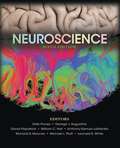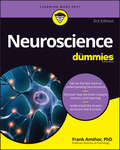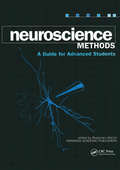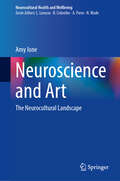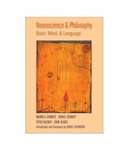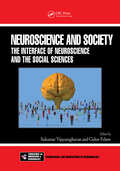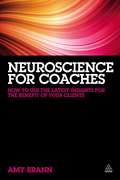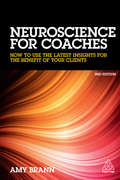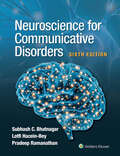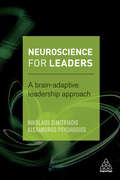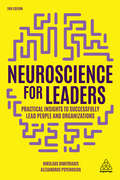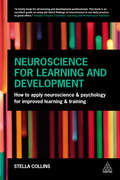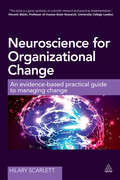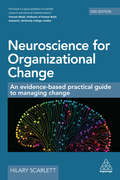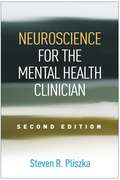- Table View
- List View
Neuroscience
by Scott A. Huettel Jennifer M. Groh George J. Augustine Anthony-Samuel LaMantia Leonard E. White and Emeritus Editor Dale PurvesFor more than twenty-five years, Neuroscience has been the most comprehensive and clearly written neuroscience textbook on the market. This level of excellence continues in the seventh edition, with a balance of animal, human, and clinical studies that discuss the dynamic field of neuroscience from cellular signaling to cognitive function. New learning objectives and more concise sections make the content even more accessible than before. Neuroscience provides a bridge between the undergraduate and medical school worlds. It brings the relevance of neuroscience to both those exploring careers in the field as undergraduates and those developing core neuroscience understanding for medical school. It accomplishes this by presenting a balance of animal, human, and clinical studies that discuss the dynamic field of neuroscience from cellular signaling to cognitive function.
Neuroscience (Fifth Edition): Fundamentals For Rehabilitation
by Laurie Lundy-EkmanBoost your skills in planning and managing physical rehabilitation! Neuroscience: Fundamentals for Rehabilitation, 5th Edition provides a practical guide to the nervous system and how it affects the practice of physical and occupational therapy. Case studies and first-person stories from people with neurologic disorders make it easier to apply your knowledge to the clinical setting. New to this edition are new chapters on neuroanatomy imaging and neurologic examination techniques. Written by noted PT educator Laurie Lundy-Ekman, this book uses evidence-based research to help you understand neurologic disorders and treat clients who have physical limitations due to nervous system damage or disease.
Neuroscience (Sixth Edition)
by David Fitzpatrick Dale Purves Michael L. Platt George J. Augustine William C. Hall Anthony-Samuel LaMantia Richard D. Mooney Leonard E. WhiteThis practical guide connects the theory of neuroscience with real-world clinical application by utilizing first person accounts of neurological disorders and in-depth case studies. It also provides clear descriptions of a complete range of neurological disorders. <P><P>Special features such as "at-a-glance" summaries, pathology boxes, and hundreds of full-color illustrations, enhance the learning experience and make it easy to master the fundamentals of neuroscience rehabilitation.
Neuroscience For Dummies
by Frank AmthorA fascinating look at what’s rattling around in your skull Neuroscience For Dummies introduces you to the mind-boggling study of the human brain. It tracks to the content of a typical introductory neuroscience class at the college level —and it’s perfect for anyone curious about what makes us tick. New technologies and an explosion of research have completely transformed our understanding of memory, depression, the mind-body connection, learning, and genetics. This updated edition—still in classic, beginner-friendly Dummies style—covers the latest research advances and technologies in the field of neuroscience. Put some knowledge about the brain into your brain. Grasp the basic concepts and applications of neuroscience Understand the brain’s structure and function Explore how the brain impacts memory, learning, and emotions Discover how the brain is connected with other physical systemsFor students and general readers alike, Neuroscience For Dummies is a great way to understand what’s going on inside our heads.
Neuroscience Methods: A Guide for Advanced Students
by Rosemary MartinUnique in its coverage of such an extensive range of methods, Neuroscience Methods: A Guide for Advanced Students provides easy-to-understand descriptions of the many different techniques that are currently being used to study the brain at the molecular and cellular levels. This valuable reference text will help rescue undergraduate and postgraduate students from continuing bewilderment at the methods sections of current neuroscience publications.Topics covered include in vivo and in vitro preparations, electrophysiological, histochemical, hybridization and genetic techniques, measurement of cellular ion concentrations, methods of drug application, production of antibodies, expression systems, and neural grafting.
Neuroscience and Art: The Neurocultural Landscape (Neurocultural Health and Wellbeing)
by Amy IoneThis book is focused on how understanding ourselves as humans is incomplete without considering both biological and cultural aspects. Using the neurocultural perspective, the book explores how everything in the world is filtered back and forth through the brain and culture. The thrust of the book, therefore, is to explore the power of art in creating a bridge between cultural and neuroscientific lines of inquiry. Looking at both clinical and non-clinical populations, the text examines historical foundations, distinguishes congenital/developmental conditions from those that are acquired, and emphasizes how the brain constructs our sensory experiences. Several distinctive features separate this research from other publications. First, the book opens with a review of how the historical literature is still etched into the ideas we employ to explain elements across the interdisciplinary fields of art, aesthetics, our sensory experience, psychology, cognition, and well-being. Second, the research adopts a humanistic rather than a philosophical or social science perspective in demonstrating the value of coupling anatomy and physiology with the natural and social environment. In this, artists from all genres are incorporated. Among them are Iris Murdoch, Ludwig van Beethoven, Leonardo da Vinci, Cristoforo de Predis, Rembrandt, Federico Fellini, Chuck Close, and David Hockney. Case studies demonstrate how neuroscientific research meshes with art, individual, and cultural variables in ways that range from health and well-being to physiological decline and biological traumas. These include a case study that examines how Oliver Sacks combined biology and biography in his writings. It also explores art projects in several genres inspired by his studies. Another case study is on the role of film as a useful clinical tool. Here the book also demonstrates that cinematic devices used by filmmakers intersect with perceptual and cognitive neuroscience. A defining feature of the analysis is the integration of research on brain injuries with humanistic responses in film, literature, and the visual arts. This section outlines the lack of consensus regarding the causes and treatment of “shell shock” in World War I before introducing how research and art now work with PTSD/TBI. Finally, the book examines therapeutic cases of professional and non-professional artists, concluding with a discussion of synesthesia and the senses.
Neuroscience and Education: A Philosophical Appraisal (Routledge International Studies in the Philosophy of Education)
by Clarence W. JoldersmaThis volume makes a philosophical contribution to the application of neuroscience in education. It frames neuroscience research in novel ways around educational conceptualizing and practices, while also taking a critical look at conceptual problems in neuroeducation and at the economic reasons driving the mind-brain education movement. It offers alternative approaches for situating neuroscience in educational research and practice, including non-reductionist models drawing from Dewey and phenomenological philosophers such as Martin Heidegger and Merleau-Ponty. The volume gathers together an international bevy of leading philosophers of education who are in a unique position to contribute conceptually rich and theoretically framed insight on these new developments. The essays form an emerging dialogue to be used within philosophy of education as well as neuroeducation, educational psychology, teacher education and curriculum studies.
Neuroscience and Multilingualism
by Edna AndrewsHow are languages represented in the human brain? Ideas from neuroscience have increasingly been applied to the study of language, exploring the neural processes involved in acquisition, maintenance and loss of language and languages, and the interaction between languages in bi- and multilingual speakers. With a sharp focus on multilingualism, this culmination of cutting-edge research sheds light on this challenging question. Using data from a variety of experiments, this is the first book length study to offer a new neuroscientific model for analysing multilingualism. Alongside a comprehensive analysis of the theoretical and experimental contributions to the field, it presents new data and analysis obtained from a multilingualism fMRI study. It also includes a unique longitudinal study of second and third language acquisition combined with extensive empirically valid language proficiency data of the subjects. A must-read for researchers and advanced students interested in neurolinguistics, second language acquisition, and bi- and multilingualism.
Neuroscience and Philosophy
by Felipe De Brigard and Walter Sinnott-ArmstrongPhilosophers and neuroscientists address central issues in both fields, including morality, action, mental illness, consciousness, perception, and memory. Philosophers and neuroscientists grapple with the same profound questions involving consciousness, perception, behavior, and moral judgment, but only recently have the two disciplines begun to work together. This volume offers fourteen original chapters that address these issues, each written by a team that includes at least one philosopher and one neuroscientist who integrate disciplinary perspectives and reflect the latest research in both fields. Topics include morality, empathy, agency, the self, mental illness, neuroprediction, optogenetics, pain, vision, consciousness, memory, concepts, mind wandering, and the neural basis of psychological categories. The chapters first address basic issues about our social and moral lives: how we decide to act and ought to act toward each other, how we understand each other&’s mental states and selves, and how we deal with pressing social problems regarding crime and mental or brain health. The following chapters consider basic issues about our mental lives: how we classify and recall what we experience, how we see and feel objects in the world, how we ponder plans and alternatives, and how our brains make us conscious and create specific mental states.
Neuroscience and Philosophy: Brain, Mind, and Language
by Peter Hacker Daniel Dennett John Searle Maxwell BennettIn Neuroscience and Philosophy, three prominent philosophers and a leading neuroscientist clash over the conceptual presuppositions of cognitive neuroscience. The book begins with an excerpt from Maxwell Bennett and Peter Hacker's Philosophical Foundations of Neuroscience (Blackwell, 2003), which questions the conceptual commitments of cognitive neuroscientists. Their position is then criticized by Daniel Dennett and John Searle, two philosophers who have written extensively on the subject, and Bennett and Hacker in turn respond. Their impassioned debate encompasses a wide range of central themes: the nature of consciousness, the bearer and location of psychological attributes, the intelligibility of so-called brain maps and representations, the notion of qualia, the coherence of the notion of an intentional stance, and the relationships between mind, brain, and body. Clearly argued and thoroughly engaging, the authors present fundamentally different conceptions of philosophical method, cognitive-neuroscientific explanation, and human nature, and their exchange will appeal to anyone interested in the relation of mind to brain, of psychology to neuroscience, of causal to rational explanation, and of consciousness to self-consciousness.In his conclusion Daniel Robinson (member of the philosophy faculty at Oxford University and Distinguished Professor Emeritus at Georgetown University) explains why this confrontation is so crucial to the understanding of neuroscientific research. The project of cognitive neuroscience, he asserts, depends on the incorporation of human nature into the framework of science itself. In Robinson's estimation, Dennett and Searle fail to support this undertaking; Bennett and Hacker suggest that the project itself might be based on a conceptual mistake. Exciting and challenging, Neuroscience and Philosophy is an exceptional introduction to the philosophical problems raised by cognitive neuroscience.
Neuroscience and Society: The Interface of Neuroscience and the Social Sciences (Frontiers in Neuroscience)
by Sukumar Vijayaraghavan Gidon FelsenAdvances in neuroscience research are rapidly redefining what it means to be human. The absence of the brain/mind dichotomy has, in turn, removed the separation between our brain biology and our sociocultural experiences, raising questions for social sciences to address. How responsible are we, as individuals, for our actions? Do we have free will? Is it ethical for us to peer into others’ brains? How are our collective social cultural norms influenced by our brain function? At the same time, neuroscientists need to develop better intuition about the ethical, legal, and social implications of their research. Close collaboration between neuroscience and social sciences is the best way forward.This book acts as an introduction to these and other issues that lie at the interface of neuroscience and social sciences, using the physiological underpinnings of our decision-making processes as a framework. Examples of topics addressed here are: Neuroscience and economics Neuroscience and law Neuroscience and ethics Neuroscience and mental health Neuroscience of religion and humour The book is intended for students of neuroscience and social sciences, as well as readers generally interested in the human condition. It is hoped that the book will stimulate cross-disciplinary thinking and inspire a new generation of thinkers who are willing to look at both social sciences and neuroscience research with a different lens. Such bridge builders will be the pioneers of the next level of interrogation at this emerging interface.
Neuroscience and the Future of Chemical-Biological Weapons
by Malcolm DandoThis study is concerned with the potential misuse of advances in neuroscience. Recently, fears surrounding the abuse of benignly-intended research in the life sciences – the dual-use problem – have focused on 'Gain-of Function' experiments, in which deadly influenza viruses have been made transmissible through the air. However, many other aspects of the life sciences, besides the study of viruses, could be subject to hostile misuse. There is a century-long history of the development of novel neuroweapons, which is based on civil research and a vast, ongoing increase in research funding. These developments underpin an attempt to produce a mechanistic understanding of brain functions, which risk being subjected to misuse in the future. This study does not propose that this benignly-intended work be reined in, nor suggest that neuroscientists bear the sole responsibility for preventing the misuse of their work. However, they remain inextricably involved and should, one could argue, assume a certain level of accountability. Thus, this book sheds light on how they, and international security specialists, can work to bolster efforts to minimise the potential for misuse of modern neuroscience research.
Neuroscience and the Problem of Dual Use: Neuroethics in the New Brain Research Projects (Advanced Sciences and Technologies for Security Applications)
by Malcolm R. DandoThis book discusses recent brain research and the potentially dangerous dual-use applications of the findings of these research projects. The book is divided into three sections: Part I examines the rise in dual-use concerns within various state’s chemical and biological non-proliferation regime’s during this century, as well as the rapid technologically driven advances in neuroscience and the associated possible misuse considerations in the same period. Part II reviews the brain research projects in the EU, USA, Japan, China and several other countries with regard to their objectives, achievements and measures to deal with the problem of dual-use. Part III assesses the extent to which the results of this civil neuroscience work, which is intended to be benign, are being, and could be protected against future hostile applications in the development of novel chemical and biological weapons.
Neuroscience for Clinicians
by C. Alexander Simpkins Annellen M. SimpkinsThis book fills the need for an introductory text that opens the field up to the beginner and takes them to higher-level thinking about neuroscience. Neuroscience has captured the interest of students, professionals, and the general public. In fact it is so new, that there are very few books that gather it together in one text. Neuroscience is an amalgamation of many fields: psychology, cognitive science, chemistry, biology, engineering, philosophy, mathematics, and statistics. People who are new to the discipline have to be able to find their way through all of these fields together. In addition, they need to understand the highly technical lexicon, modeling methods, and theoretical assumptions used to describe brain structure, function, and the interaction between them. This book helps readers navigate the conventions used to describe the brain that developed through the years. The authors crystallize the complex modeling methods and technologies so that readers understand what they are saying and how to use them. They address the important underlying principles and important issues of neuroscience, with the debates and discussions that are ongoing as the field evolves. They also include many salient fine-grained details so that the book is not just an overview, but also a useful guide for many levels of readers.
Neuroscience for Coaches
by Amy BrannThe world of coaching is competitive. Organisations want coaches who deliver results, and can prove it. Many coaching tools and techniques are now fairly well established - but how do they actually work? The coach who can answer this question credibly and convincingly is sought after. This ground-breaking book equips coaches with cutting edge neuroscience information that will help them deliver greater value to their clients. It covers the foundations that coaches need to be aware of and crucially, the ways they can use this new information effectively and practically in their everyday work. Readers will strengthen their kitbag of coaching tools and will be able to explain to their clients the neurological underpinning of the techniques they are using. No forward-thinking coach can afford to be ignorant of recent scientific developments: Neuroscience for Coaches will give them the practical knowledge they need.
Neuroscience for Coaches: How coaches and managers can use the latest insights to benefit clients and teams
by Amy BrannMany coaching tools and techniques are now well established, but how do they actually work? The third edition of Neuroscience for Coaches answers this question to help coaches and managers deliver greater value to clients and employees.Based on extensive research, Neuroscience for Coaches provides a clear explanation of the aspects of neuroscience that are relevant to coaching so coaches can describe to clients why particular techniques work and the benefits to be gained from using them. It also features interviews with Marshall Goldsmith, Susan Grandfield, Christian van Nieuwerburgh and Kim Morgan on topics including mindfulness and behaviour change in coaching.This fully updated third edition covers the latest neuroscientific research on key brain areas and their functions, such as the Prefrontal cortex and Amygdala which affect attention, processing and emotional regulation. With tips and insights throughout, it crucially demonstrates the ways in which coaches and managers who coach can use this information effectively and practically in their everyday work. Neuroscience for Coaches is a vital resource for improving coaching practice with the latest scientific developments, tools and techniques.
Neuroscience for Coaches: How to Use the Latest Insights for the Benefit of Your Clients
by Amy BrannMany coaching tools and techniques are now fairly well established, but how do they actually work? Neuroscience for Coaches equips coaches with information that will help them answer this question and therefore deliver greater value to clients. Based on over twelve years of research, this book provides a clear explanation of the aspects of neuroscience that are relevant to coaching so you can describe to clients from a neuroscientific perspective why particular techniques and methods work and the benefits to them.This fully updated 2nd edition of Neuroscience for Coaches includes new interviews with Marshall Goldsmith, Susan Greenfield, Christian van Nieuwerburgh and Kim Morgan, along with new material on oxytocin, goals and mindfulness. It covers the latest neuroscientific research and, crucially, the ways in which coaches can use this information effectively and practically in their everyday work. Neuroscience for Coaches is a vital resource for keeping up to date with recent scientific developments, tools and techniques in coaching.
Neuroscience for Communicative Disorders
by Subhash C. Bhatnagar Md PhD Ccc-Slp Lotfi Hacein-Bey Fasfnr Pradeep RamanathanDevelop a practical understanding of neuroscience and confidently prepare for your future career as a clinician, researcher, or instructor with this thoroughly updated, extensively illustrated bestseller. Favored by students and educators for its user-friendly approach to complex neurological concepts, Neuroscience for Communicative Disorders, 6th Edition, provides a simplified and meaningful overview of the basics of functional neuroscience enhanced by for problem solving studies that connect neuroscience to the specific disorders of cognitive communication you’ll encounter in practice. The 6th Edition introduces full-color images and reflects the latest findings and clinical applications in the field, making this trusted resource even more engaging and easy to use.
Neuroscience for Leaders: A Brain Adaptive Leadership Approach
by Dr Nikolaos Dimitriadis Dr Alexandros PsychogiosTo behave more productively in complex business situations, we need to understand and alter the inner workings of our brain. With insight from applied neuroscience, behavioural economics and psychology, the brain can be retrained and become our most valuable asset. Neuroscience for Leaders takes a practical approach and offers an easy-to-implement framework for making the behavioural changes to become a more effective leader. Drawing on research and practical experience, the authors present a flexible framework for fine-tuning the leadership brain. The Brain Adaptive Leadership approach is a step-by-step guide to enhancing the way you think, understanding and nurturing emotions, shaping automated brain responses, and developing dynamic relations. Neuroscience for Leaders explains both the underlying science and how to apply its findings in business, demonstrating why and how you can become a better leader through brain-based learning. With tools, managerial tips and clear actions to implement the method straight away, Neuroscience for Leaders is an invaluable companion to managers and leaders who want to gain the brain edge.
Neuroscience for Leaders: Practical Insights to Successfully Lead People and Organizations
by Dr Nikolaos Dimitriadis Dr Alexandros PsychogiosUnlock your potential with the latest neuroscientific insights and succeed as a leader in complex business environments.As understanding of neuroscience increases, it is better understood how scientific insights can be applied to develop and enhance leadership. Neuroscience for Leaders captures the most up-to-date and important findings in neuroscience and links these to the business world. This guide offers a simple framework to put these principles into practice to make better decisions, take the right actions and find faster solutions.Now in its second edition, this book presents a comprehensive approach to leading people and organizations based on academic research. The authors' 'Brain Adaptive Leadership' approach offers a step-by-step guide to enhancing the way leaders think, understanding and nurturing emotions, shaping automated brain responses and developing dynamic relationships. Examples, activities and practical suggestions are all designed to be clear and engaging. Neuroscience for Leaders is the essential guide for leaders who are ready to gain the business advantage scientifically.
Neuroscience for Leadership
by Paul Brown Tara Swart Kitty ChisholmLeadership can be learned: new evidence from neuroscience clearly points to ways that leaders can significantly improve how they engage with and motivate others, allowing them and their organizations to continue discovering their potential. This book provides leaders and managers with a guide to practical, effective actions, based on neuroscience, explained in an accessible way. It focuses on the competencies and capabilities that leaders and managers need, to think creatively, take good decisions, improve their performance and resilience, deal with complexity, incentivize, and innovate, rather than focusing on brain regions or even functional pathways within the brain. This book comes from three authors who combine knowledge and experience in applied neuroscience, psychiatry, organizational psychology, learning and leadership coaching at a world class level.
Neuroscience for Learning and Development
by Stella CollinsNeuroscience for Learning and Development is about the psychology and neuroscience that underpins effective and successful training and learning. It introduces the latest research and concepts and suggests practical tools, techniques and ideas to improve how trainers train and how people learn. Readers will find new and more effective ways of working and will discover a sound basis for good practice. They will also discover the research that backs up what they are already doing well and evidence to support future projects and plans in order to make a convincing case to budget holders. Neuroscience for Learning and Development covers the design and delivery of face-to-face, online and virtual learning as well as how to create environments which make learning easier. It provides evidence to stop training and learning being seen as 'soft and fluffy' and will help trainers and L&D teams persuade the rest of their organization of their value. This book explains the science behind creative training delivery so that learners will be motivated, enjoy training, pay attention, remember what they learn and be able to apply it back at work. It explains the neuroscience of attention, memory and habits and how to make sure people learn what they need to learn. Readers will be able to distinguish the neuromyths from the neuroscience and will find out which elements of brain science offer evidence for current practice and as well as discovering new ideas to continue to develop their skills and practice.
Neuroscience for Organizational Change
by Hilary ScarlettUnderstanding how employees' brains work enables organizations to build cultures, design structures and processes that help people to be more innovative, productive and engaged. This has lasting impact in terms of meeting business objectives and becoming an employer of choice. We need to change the way we manage change in organizations: by understanding the brain we can do this better. Neuroscience brings a new lens through which to look at people and to understand why they react to situations in a certain way, what they need from work relationships to perform at their best, and how they might be better motivated. Neuroscience for Organizational Change not only provides evidence that will persuade the most sceptical of leaders but also provides many practical examples of how to apply the insights. The book provides a 'win-win': it will enable the organization to improve performance and also help to support the mental and emotional well-being of employees. Amongst other areas, Neuroscience for Organizational Change explores why we find organizational change difficult and what we can do to keep people focused and performing at their best. It looks at our need for social connection at work, the essential role that leaders and managers play, how best to manage emotions and reduce bias to avoid making flawed decisions, and why we need communication, involvement and storytelling to help us through change. It also sets out a new science-based planning tool, SPACES, to enhance motivation. Drawing on the author's successful masterclasses, Neuroscience for Organizational Change provides practical guidance and examples from big-name organizations such as Lloyds Banking Group, Department for Business, Innovation and Skills, Orbit Housing Group and BAE Systems. Each chapter includes checklists and questions to help the reader to reflect on what they might take away and apply to the specific context of their own organization.
Neuroscience for Organizational Change: An Evidence-based Practical Guide to Managing Change
by Hilary ScarlettOrganizational change can be unpredictable and stressful. With a better understanding of what our brains need to focus and perform at their best, organizations and leaders can increase employee engagement, productivity and well-being to successfully manage such periods of uncertainty. Drawing on the latest scientific research and verified by an independent neuroscientist, Neuroscience for Organizational Change explores the need for social connection at work, how best to manage emotions and reduce bias in decision-making, and why we need communication, involvement and storytelling to help us through change. Practical tips and suggestions can be found throughout, as well as examples of how these insights have been applied at organizations such as Lloyds Banking Group and GCHQ. The book also sets out a practical science-based planning model, SPACES, to enhance engagement. This updated second edition of Neuroscience for Organizational Change contains new chapters on planning the working day with the brain in mind and on overcoming the difficulties related to behavioural change. It also features up-to-the-minute wider content reflecting the latest insights and developments, and updated case studies from the first edition which give a long-term view of the benefits of applying neuroscience in organizations.
Neuroscience for the Mental Health Clinician, Second Edition
by Steven R. PliszkaAccessible and succinct, this book has given thousands of clinicians and students the basic understanding of neuroscience that is essential in contemporary mental health practice. Steven R. Pliszka synthesizes current knowledge on the neurobiological bases of major psychiatric disorders. He explores the brain systems that underlie cognition, emotions, and behavior; how disturbances in these systems can lead to psychopathology; and the impact of genetic and environmental risk factors across development. The book also addresses the ways that both pharmacological and psychosocial treatments act on the brain as they bring about a reduction in symptoms. Illustrations include 93 black-and-white figures and 14 color plates. New to This Edition *Incorporates over a decade of important advances in brain science. *Heightened focus on brain networks replaces a deficit-based understanding of disorders. *Cutting-edge discussions of genetics and epigenetics, the biological impact of stress, neurotransmitters, novel depression treatments, and other timely topics. *Detailed chapters on autism spectrum disorder and dementia. *Numerous new and revised figures.


